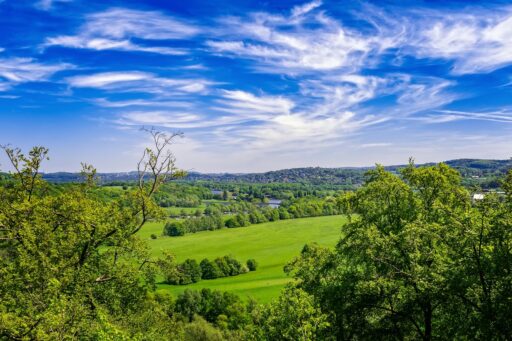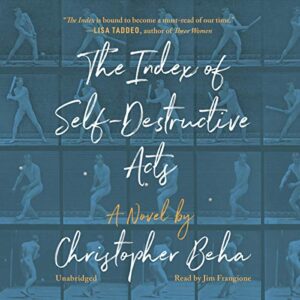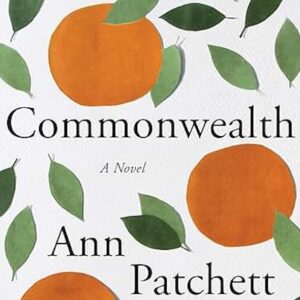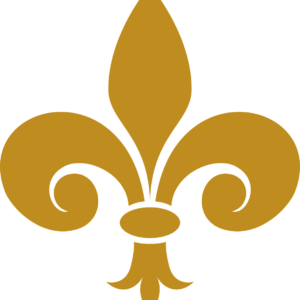This list is based partly on some reading I’ve been doing for a novel project now drawing near completion. Two themes govern the list. The more fun theme is that of adventure, romance, epic, enchantment—in a word, fantasy. The equally profound and urgent, if less obviously exciting theme, is that of georgics or the literary tradition that celebrates the cultivation of the earth, as well as its beauty and mystery and terror.
Perhaps no text is more foundational to this list than Vergil’s Georgics. I’ve been re-reading them in Latin because the hero and heroine of my novel do that. I’d forgotten how beautiful the poetry is. There are so many lines that get stuck in my ears, though they are probably dear to me as much for what they mean. For example:
sed neque Medorum sylvae ditissima terra nec pulcher Ganges atque auro turbidus Hermus laudibus Italiae certent non Bactra neque Indi totaque turiferis Panchaia pinguis harenis
I might put these lines into English like this:
But neither the land of the Medes, rich in groves, nor Ganges, though fair, nor Hermus rushing golden matches Italy’s praise: nor Bactria nor Ind nor all the sands of Panchaia, bearing incense.
Vergil was the grandfather of all genuinely patriotic literature. We may all ask whether we feel of any place on this earth as the poet feels in these lines for his Italia—which, as he detailed in verse, was ravaged by war and betrayed by human passions. And if we are not part of a story, or if the story we are part of is not tied to a place, then why not and what does this mean for us?
The other source of the reading list is evident in a series of texts I’ve been absorbing, beginning with B. P. Reardon’s foundational collection of the ancient Greek novels. From there I’ve worked through Four Byzantine Novels and Three Medieval Greek Romances as well as Miracle Tales from Byzantium and Christian Novels from the Menalogion of Symeon Metaphrastes, to say nothing of a heap of scholarly material.
Blending these two, fantasy and georgic, I come up with twelve entries, six by men and six by women. To my way of thinking, and I believe on display in these excellent works, the passions that drive adventure and the passions that shape the land are folded into each other.
1) The Awakening Land, Conrad Richter (1950). The story of the settlement of the Ohio Valley. The point of view of this trilogy set between the end of the eighteenth century and the middle of the nineteenth (published 1940–1950) is largely female. The historical research Richter undertook is daunting, the dialect he records fascinating.
2) Lark Rise to Candleford, Flora Thompson (1945). Another trilogy, set in Oxfordshire in the late nineteenth century, largely autobiographical. Though the English countryside was not being settled by pioneers, it was undergoing an equally massive change with the industrialization of agriculture.
3) Jerusalem, Selma Lagerlöf (1902). This novel in two volumes shows how a religious fanatic from America stirs a group of Swedish farmers to relocate to the Land of Israel at the end of the nineteenth century. She was not orthodox, I suppose, but I find that Lagerlöf had a wise religious sensibility (which you can also find in her collection of stories Christ Legends). With Jerusalem, she knew the places she wrote about.
4) The Serpent of Stars, Jean Giono (1933). Hard to pick just one by Giono. Tremendously lyrical French author, son of an Italian who moved to Alpine France and became a Protestant. Jean Giono, however, was more rebellious still and became basically a kind of pagan. This book turns from novelistic prose into an awesome pageant put on by shepherds, like a medieval mystery play in which the characters are River, Mountain, Sea, Man….
5) Beauty on Earth, Charles-Ferdinand Ramuz (1927). Another mountain-dwelling francophone Protestant. Ramuz, like Giono, was a tremendously lyrical writer and a sort of pagan, though in his case combining something of a lingering, troubled Christian sensibility with a sense for the earth. This novel is about a devastatingly beautiful young woman whose arrival in a Swiss village proves… well, devastating.
6) The Simple Life, Ernst Wiechert (1939). Wiechert was interred by the Nazis for a few months in 1938. He wrote this novel after they released him. It follows the quest of a WWI veteran to find peace, shortly after the Armistice, by leading a Thoreauvian existence in the Prussian countryside. Like Ramuz, Giono, and Lagerlöf, Wiechert merged his religious upbringing with a new, earthier consciousness.
7) Land of Aeolia, Ilias Venezis (1943). An iconic work in the Greek world, and like the others, at least half-pagan in its sensibility. An autobiographical novel about the author’s idyllic childhood in Asia Minor, before the horrific Greco-Turkish war that followed on the heels of WWI—Venezis shows some similarity to Wiechert in that regard. Venezis also knew imprisonment (in his case, by the Turks) as well as war and displacement.
8) Arturo’s Island, Elsa Morante (1957). Morante, too, was affected by the cataclysms of the first half of the twentieth century, and this is evident even when these are not front and center in her novels. This is another novel of imperfect isolation, but unlike Wiechert’s, the hero is an adolescent. And as Richter did an amazing job of conveying a female point of view, so Morante brilliantly render’s a boy’s lonely coming of age.
9) Malicroix, Henri Bosco (1948). Henri was the brother of Saint John Bosco. This is a historical novel like Richter’s, a Mediterranean coming-of-age tale like Morante’s, and a novel of retreat and ascetic isolation, in which the countryside itself—here, the Camargue—is a major character, like Wiechert’s book.
10) The World My Wilderness, Rose Macaulay (1950). A young woman comes to live with her father after having spent the war in France with her mother and running wild with the resistance. In bombed-out yet verdant London (“rewilded” we might now say) she finds an odd echo of her life in France and, eventually, reconciliation with her mother. After writing this book, Macaulay—who should be better known—returned to the Christian faith of her upbringing.
11) A Pagan Place, Edna O’Brien (1970). Female coming of age in Ireland in the 1930s. The novel feels like the author’s letter to herself, narrating her own life to herself. It’s written in the second person, which is odd to say the least, and there is no direct discourse. Not everyone’s cup of tea, but technically brilliant and effective, for me at least. Again, as throughout the list, the contest and mingling of pagan and Christian.
12) The Summer Book, Tove Jansson (1972). Well, I guess that contest isn’t really apparent in this book, nor is it in the first I listed. Anyway, The Summer Book is one of the most perfect pieces of writing I’ve ever encountered. A girl and her grandmother on an islet in the Baltic. That’s pretty much it, and you want it to go on forever.
Jonathan Geltner lives in Ann Arbor MI with his wife and two sons. His translation of Paul Claudel’s Five Great Odes is available from Angelico Press and a novel, Absolute Music, is available from Slant. If you enjoy his posts at Close Reading, check out his new Substack, Romance and Apocalypse, for more frequent and in-depth essays on the places where literature and other arts meet religious ideas and experience.





